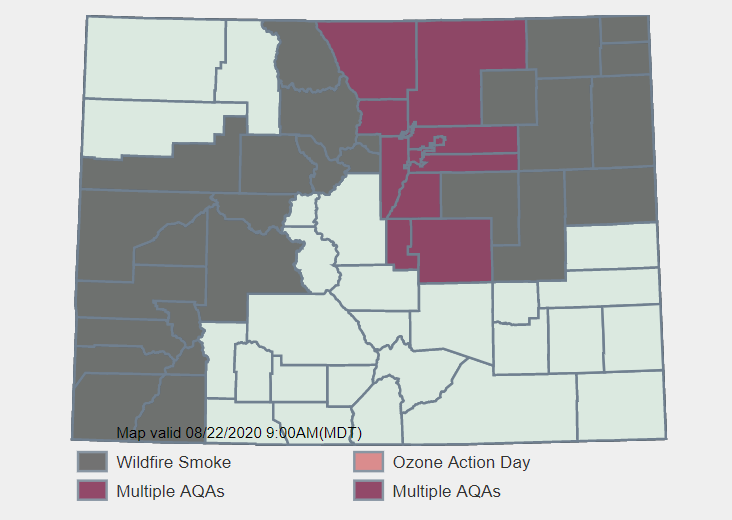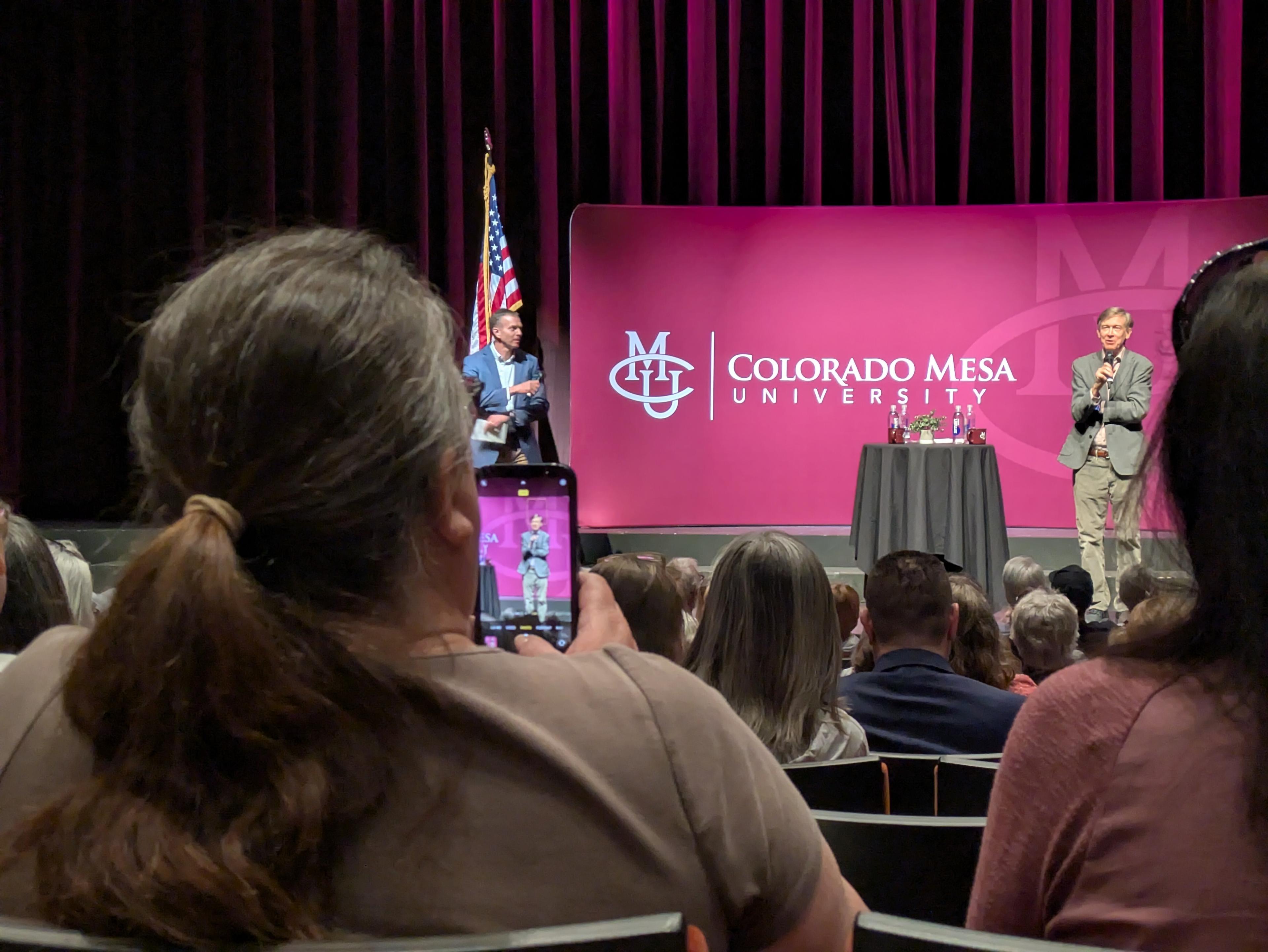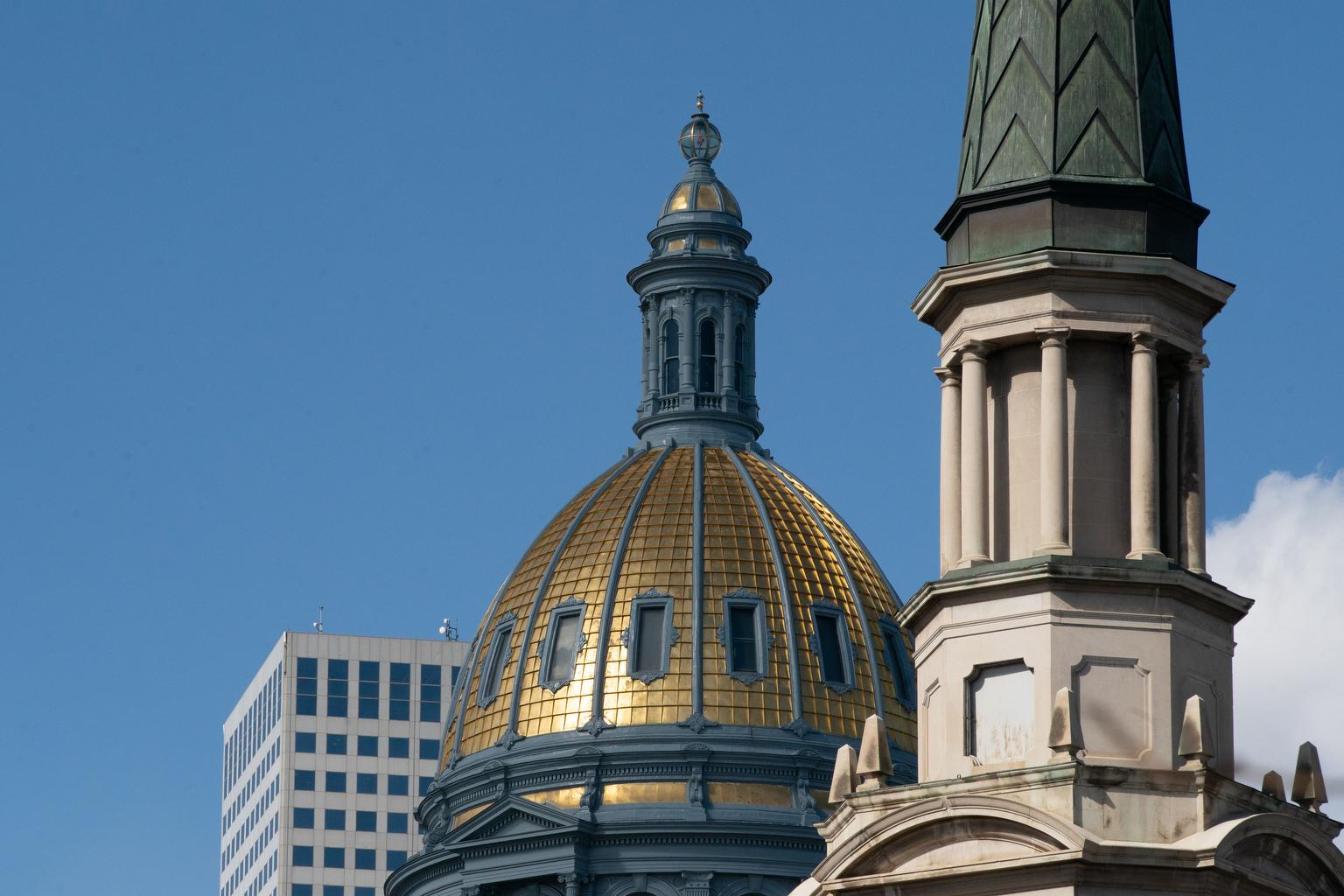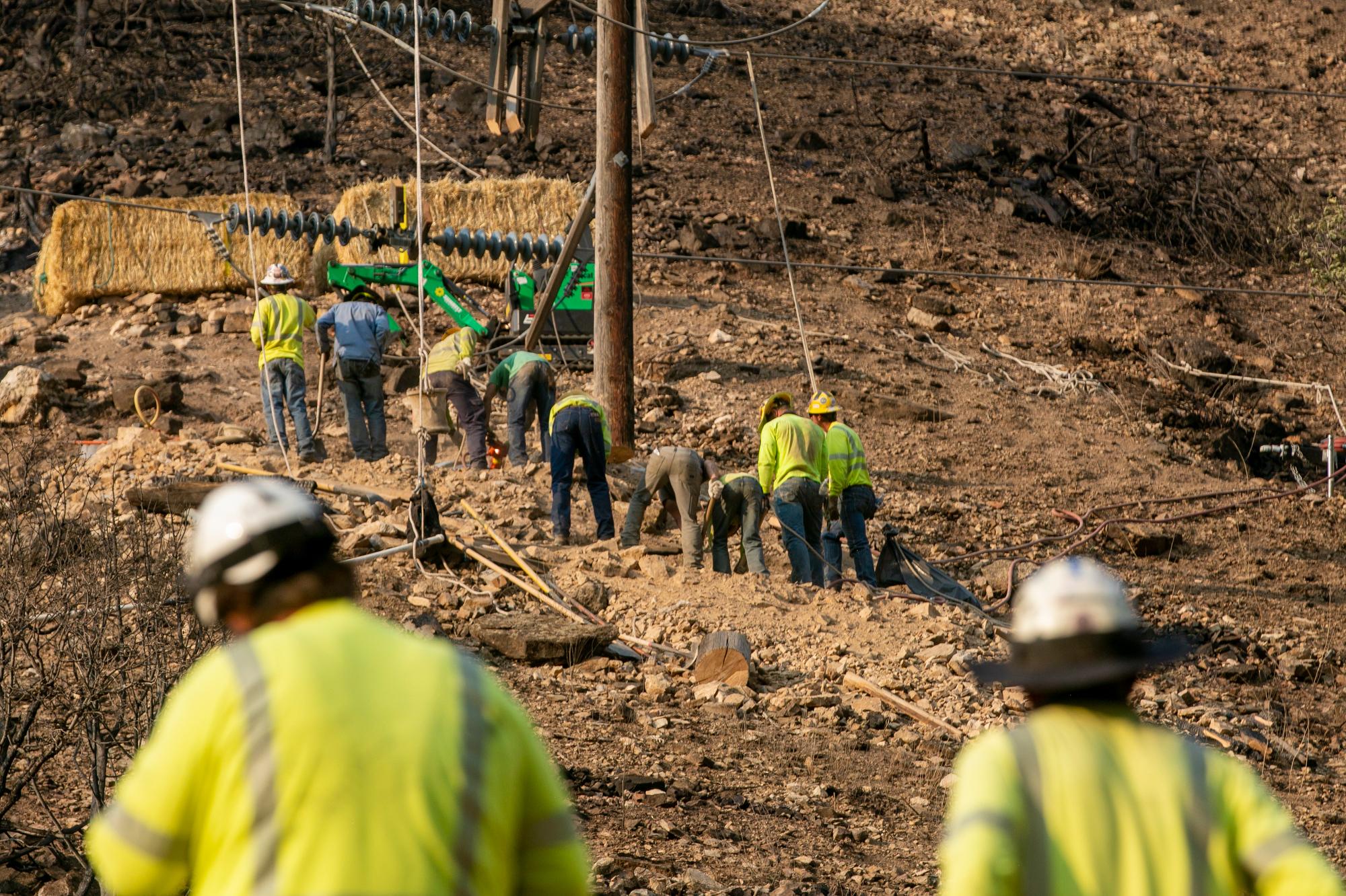
Editor's Note: This post collects all of the updates for the major fires burning in Colorado for the weekend of Aug. 22 and 23. You can find the latest updates here. Our original post continues below.
Here are the current statuses of Colorado’s four major wildfires (click on the fire name to jump to the updates):
- Grizzly Creek Fire: 30,719 acres, 33 percent containment (Aug 24, 8:05 a.m.)
- Pine Gulch Fire: 133,783 acres, 44 percent containment (Aug 24, 8:21 a.m.)
- Cameron Peak Fire: 20,118 acres, no containment (Aug 24, 7:01 p.m.6:23)
- Williams Fork Fire: 11,048 acres, 3 percent containment (Aug 24, 9:14 a.m.)
Grizzly Creek
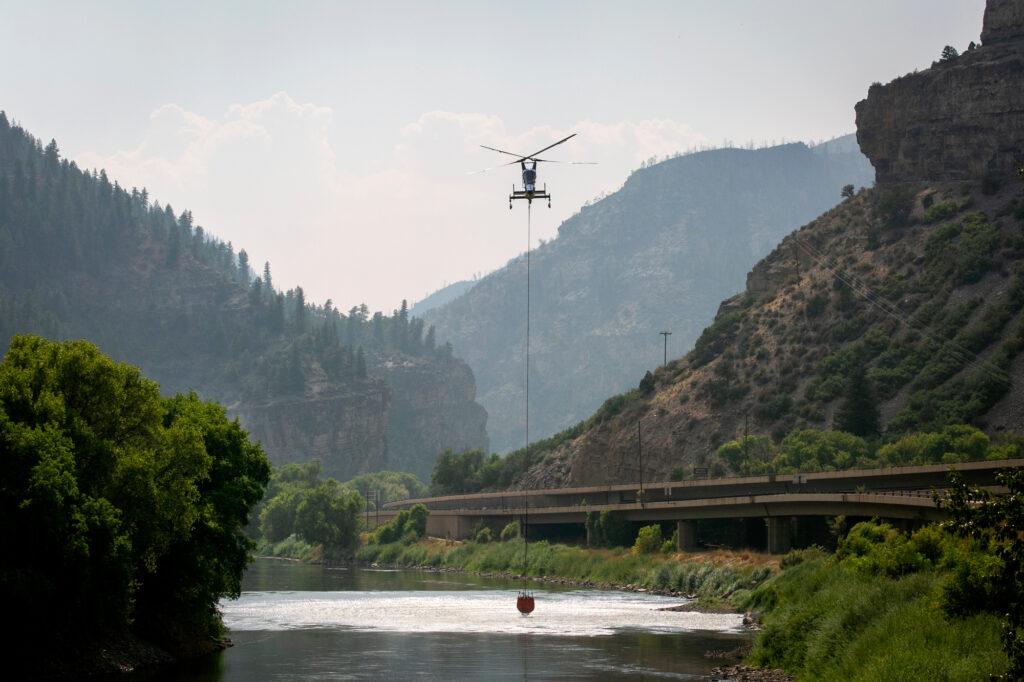
Saturday 5:00 p.m.: Fire progression on Saturday slowed down, said Brian Scott, a spokesman with the Grizzly Creek Fire.
The fire gained no acreage between Friday and Saturday. It's burned 29,992 acres but firefighters were able to double its containment. It was 11 percent contained Friday and is now 22 percent contained.
Scott said the fire is no longer burning the hot and heavy fuels like mixed conifers that it incinerated at the beginning of the fire. It has instead moved to char sagebrush, grass and aspens.
"Those just do not carry fire very well," he said. "There is a lot less fire activity and our firefighters are able to get in and work on this fire up close and personal."
Large areas of scorched ground can be seen up and down Glenwood Canyon but there are also areas left untouched, creating a patchwork along Interstate 70. The worst of the fire damage appears to be east of No Name.
Firefighters built and held containment lines around Bair Ranch, at I-70 and No Name drainage, and from Coffee Pot Road to I-70. Crews are working to create a box around the fire so it has no fuel to grow in strength or size. More than 50 miles of fire retardant has been dropped on the edge of the fire to prevent it from spreading.
Crews are busy up and down the interstate, repairing cables, restocking supplies and picking up fire retardants. Scott said some rocks have come down the mountain and onto the roadway, creating a hazard.
There is still no estimated time for reopening I-70. But Amtrak and freight trains are running through the canyon again.
A community meeting will be held virtually at 6 p.m.
Saturday 7:30 a.m.: Firefighters battling the blaze in Glenwood Canyon reached 22 percent containment as of Saturday morning. Interstate 70 remains closed in the area.
The scene in the canyon on Friday was of hillsides almost completely burned off, and a smoldering fire scene. Helicopters dipped into the Colorado River to take water up the canyon. One area they are trying hard to protect: Bair Ranch.
Across the northern and eastern parts of the state, Coloradans are seeing smoke not just from the fires burning here, but also carried over from California's hundreds of wildfires.
Pine Gulch
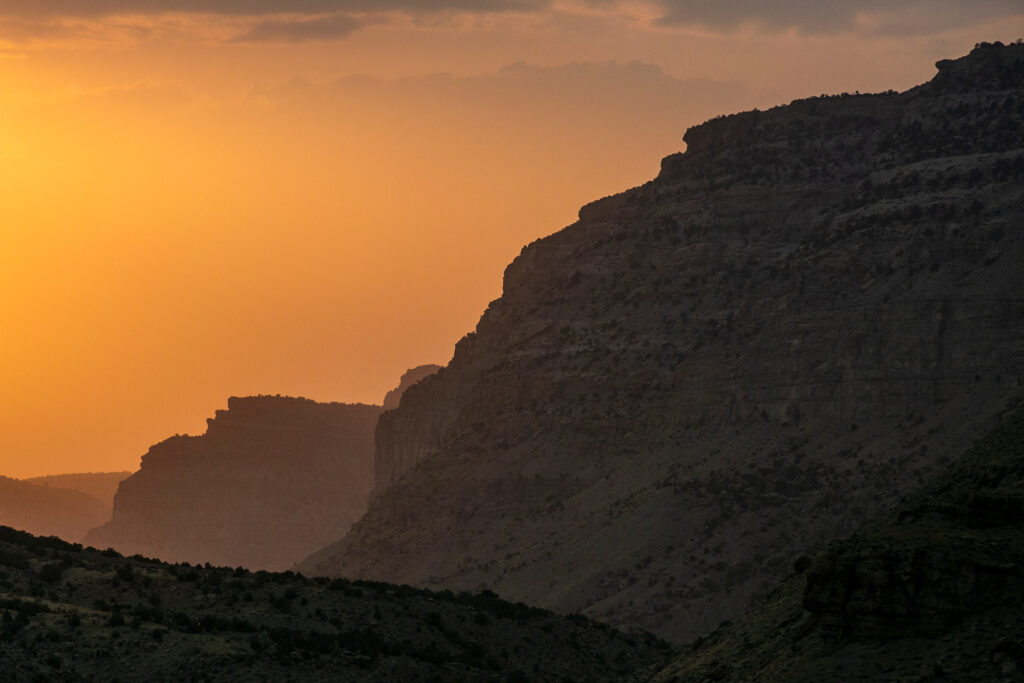
Saturday 5:15 p.m.: Governor Jared Polis declared a state of emergency due to the Pine Gulch Fire. The declaration allows Colorado agencies to coordinate efforts to work the fire and makes resources available for fire suppression, response, consequence management, and recovery efforts.
Saturday 5:00 p.m.: Firefighters are slowly making progress on the Pine Gulch Fire. It's burned 126,613 acres and is 19 percent contained.
A spokesman said the fire has slowed down a bit but it's still burning between 2,000 and 3,000 acres a day. The entire western front of the fire is most active. Firefighters are trying to prevent it from spreading to Douglas Pass.
Afternoon thunderstorms that could have threatened firefighting efforts on Saturday didn't pan out.
Saturday 7:31 a.m.: The Pine Gulch Fire remains the second-largest wildfire in state history. Nineteen percent of the perimeter is contained as of Saturday morning.
The latest update on the fire is ominous: "High pressure, hot temperatures, and single-digit relative humidities continue to make extreme fire behavior possible both day and night."
Cameron Peak and Lewstone
Sunday: The Lewstone fire grew to 165 acres with little containment.
The American Red Cross of Colorado has opened an evacuation center in La Porte, Colorado to assist residents who have been evacuated because of the Lewstone Fire. Volunteers will offer information, emergency supplies and support.
Saturday 9:34 p.m.: Another fire broke out near Fort Collins on Saturday afternoon. The Lewstone Fire caused mandatory evacuations. As of Saturday evening, it is burning about 60 acres with zero containment.
The Lewstone Fire immediately drew about 80 personnel, including two air tankers and two heavy helicopters, to contain it. The fire is burning in Rist Canyon between Whale Rock Road and Davis Ranch Road.
Saturday 5:00 p.m.: Firefighters prepared for another day of intense fire activity in the Cameron Peak Fire.
Hot and dry weather increased activity late Friday and early Saturday, said Jessica Borden, a spokeswoman with the fire. Because of that, more resources were added to fight the fire Saturday. Crews hoped to work on the fire's edge but can't safely do so until activity slows down.
"It's difficult to try to do any offensive strategy and tactics," Borden said. "We have to wait until the weather starts to cooperate with us with higher humidity levels and possibly some precipitation and that gives us an advantage over the fire."
The fire has burned 17,246 acres and has more than 650 people working on it. It is not contained.
Saturday 7:38 a.m.: Late Friday afternoon, additional evacuations were ordered near the Cameron Peak Fire west of Fort Collins. Homes and businesses are asked to gather belongings, protect their homes, and leave the area. The sheriff's office said there was immediate danger. The fire grew to 17,246 acres last night.
The order extended the evacuation area closer to the Front Range along Poudre Canyon. Specifically, it applies near Pennock Pass, south of Highway 14.
The fire is just miles north of Rocky Mountain National Park — but firefighters say the terrain should make it difficult for the flames to enter the park.
Williams Fork
Sunday 5:11 p.m.: The fire grew almost 400 more acres, to 10,813, with only 3 percent containment. Officials note "the fire is anticipated to be on the landscape for a long duration of time. This is due to the high amount of standing dead and downed timber, including beetle killed trees and extremely dry vegetation. These fuels will continue to burn readily when weather conditions, including temperatures, humidity, and winds align, creating an ongoing challenge for fire suppression. The remote location and rugged terrain of the fire contribute to the complexity of accessing locations for containment. "
Saturday 5:00 p.m.: Despite warm and dry weather, the Williams Fork Fire hasn't had as much activity, said Robyn Broyles, a spokeswoman. The fire has burned 10,437 acres and is 3 percent contained.
Broyles said firefighters are working around large and heavy timbers so they have been careful and methodical but are making consistent progress.
The fire grew 100 acres between Friday and Saturday. Hot and dry weather will stick around through Sunday and early next week so crews anticipate similar activity, though there could be some fire growth.
Moderately heavy smoke settled into the mountain valleys Saturday and that should continue again Sunday. Sensitive groups should limit the amount of time they spend outdoors.
Saturday 7:44 a.m.: The Williams Fork Fire is only about 3 percent contained, but it is burning in a relatively remote part of the mountain range. The fire is currently 10,437 acres. There are no evacuation orders in effect, though trailheads and county roads in the area are closed.
Air quality
Colorado's public health department has issued health advisories from the northeast corner to the southwest corner of the state today. They recommend limiting outdoor time across much of the state.
